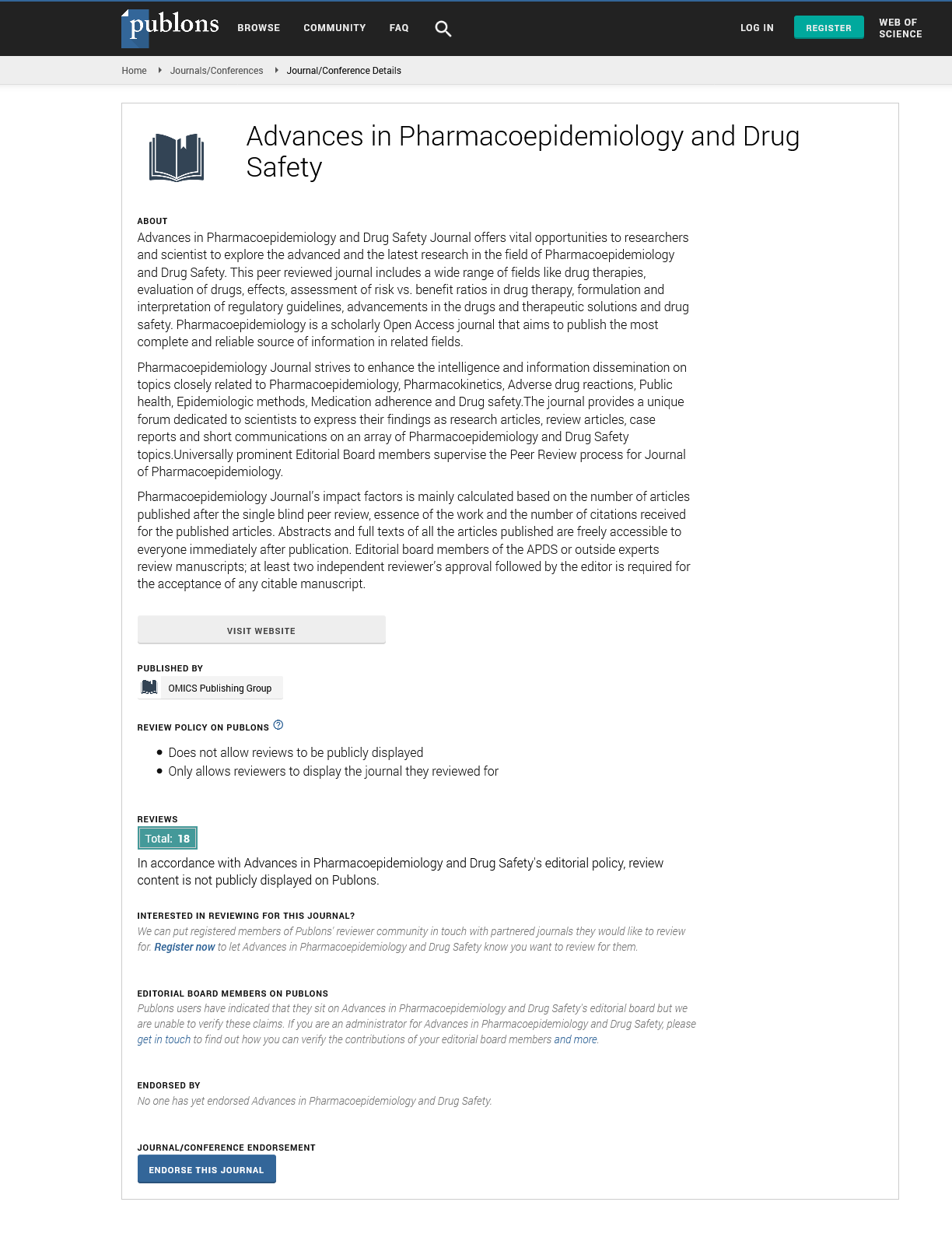Indexed In
- Open J Gate
- Genamics JournalSeek
- Academic Keys
- JournalTOCs
- RefSeek
- Hamdard University
- EBSCO A-Z
- SWB online catalog
- Publons
- Geneva Foundation for Medical Education and Research
- Euro Pub
- Google Scholar
Useful Links
Share This Page
Journal Flyer

Open Access Journals
- Agri and Aquaculture
- Biochemistry
- Bioinformatics & Systems Biology
- Business & Management
- Chemistry
- Clinical Sciences
- Engineering
- Food & Nutrition
- General Science
- Genetics & Molecular Biology
- Immunology & Microbiology
- Medical Sciences
- Neuroscience & Psychology
- Nursing & Health Care
- Pharmaceutical Sciences
Perspective - (2024) Volume 13, Issue 1
Managing Myelosuppression: Strategies for Optimal Care in Transplant Patients
Catherine Cole*Received: 27-Feb-2024, Manuscript No. PDS-24-25493; Editor assigned: 29-Feb-2024, Pre QC No. PDS-24-25493 (PQ); Reviewed: 14-Mar-2024, QC No. PDS-24-25493; Revised: 21-Mar-2024, Manuscript No. PDS-24-25493 (R); Published: 28-Mar-2024, DOI: 10.35248/ 2167-1052.23.13.352
Description
Kidney transplantation presents a transformative opportunity for individuals facing end-stage renal disease, providing improved quality of life and an increased lifespan. However, the use of immunosuppressive medications to prevent graft rejection presents unique challenges, including the risk of drug-induced myelosuppression. This perspective article aims to explore the complexities of myelosuppression in kidney transplant recipients, including its etiology, clinical manifestations, management strategies, implications for long-term graft and patient outcomes, and developing research directions.
Myelosuppression in transplant recipients
Myelosuppression refers to the suppression of bone marrow function, resulting in reduced production of blood cells, including red blood cells (anemia), white blood cells (leukopenia), and platelets (thrombocytopenia). In kidney transplant recipients, myelosuppression can occur as a consequence of immunosuppressive therapy, particularly with medications such as Calcineurin Inhibitors (CNIs), antimetabolites, and corticosteroids. The mechanisms underlying drug-induced myelosuppression are multifactorial and may involve direct bone marrow toxicity, immune-mediated reactions, and changes in hematopoietic cell signaling pathways.
Clinical presentation and diagnostic considerations
The clinical manifestations of myelosuppression in kidney transplant patients vary depending on the degree of bone marrow suppression and the specific cell lineages affected. Common symptoms include fatigue, weakness, lack of colour, susceptibility to infections, and bleeding tendencies. Laboratory evaluation, including a Complete Blood Count (CBC) with differential and peripheral blood smears, is essential for diagnosing and monitoring myelosuppression. Additionally, a bone marrow biopsy may be indicated in refractory cases or when malignancy is involved.
Management of drug-induced myelosuppression
The management of drug-induced myelosuppression in kidney transplant patients requires a general approach, involving nephrologists, hematologists, transplant surgeons, and pharmacists. Treatment strategies aim to balance the need for immunosuppression to prevent graft rejection with minimizing the risk of myelosuppression-related complications. Adjustment of immunosuppressive medications, such as dose reduction or switching to alternative agents with lower hematologic toxicity profiles, may be warranted. Supportive measures, including Erythropoiesis-Stimulating Agents (ESAs), hematopoietic growth factors, and blood transfusions, can help reduce anemia and thrombocytopenia. Close monitoring of blood counts, renal function, and medication levels is essential for optimizing therapeutic outcomes while minimizing negative effects.
Implications for graft and patient outcomes
Drug-induced myelosuppression shows significant implications for both short-term and long-term outcomes in kidney transplant recipients. Acute episodes of myelosuppression may cause infectious complications, delayed graft function, and acute rejection episodes, thereby risking early graft survival. Moreover, chronic myelosuppression and its associated results, such as anemia and thrombocytopenia, can impair patient quality of life, increase the risk of cardiovascular events, and contribute to longterm allograft dysfunction. Hence, active management of myelosuppression is essential to optimize both graft and patient outcomes in the post-transplant period.
Future investigative methods
As our understanding of drug-induced myelosuppression in kidney transplant patients continues to evolve, there is a growing need for innovative research aimed at clarifying basic mechanisms and developing targeted therapeutic interventions. Developing areas of interest include the identification of biomarkers indicating of myelosuppression risk, the exploration of novel immunosuppressive agents with improved safety profiles, and the development of personalized treatment approaches customized to individual patient factors. Collaborative efforts between basic scientists, clinicians, and pharmaceutical companies are essential to advance the field and address this critical need in kidney transplantation.
In conclusion, drug-induced myelosuppression shows a significant clinical challenge in kidney transplant patients, necessitating vigilant monitoring, prompt recognition, and customized management strategies. By adopting a variety approaches and individualizing immunosuppressive control based on patient-specific factors, clinicians can reduce the risk of myelosuppression-related complications while optimizing graft and patient outcomes. Continued research efforts and collaborative initiatives are essential to advance our understanding of drug-induced myelosuppression and develop innovative strategies to improve the long-term success of kidney transplantation.
Citation: Cole C (2024) Managing Myelosuppression: Strategies for Optimal Care in Transplant Patients. Adv Pharmacoepidemiol Drug Saf. 13:352.
Copyright: © 2024 Cole C. This is an open-access article distributed under the terms of the Creative Commons Attribution License, which permits unrestricted use, distribution, and reproduction in any medium, provided the original author and source are credited.

